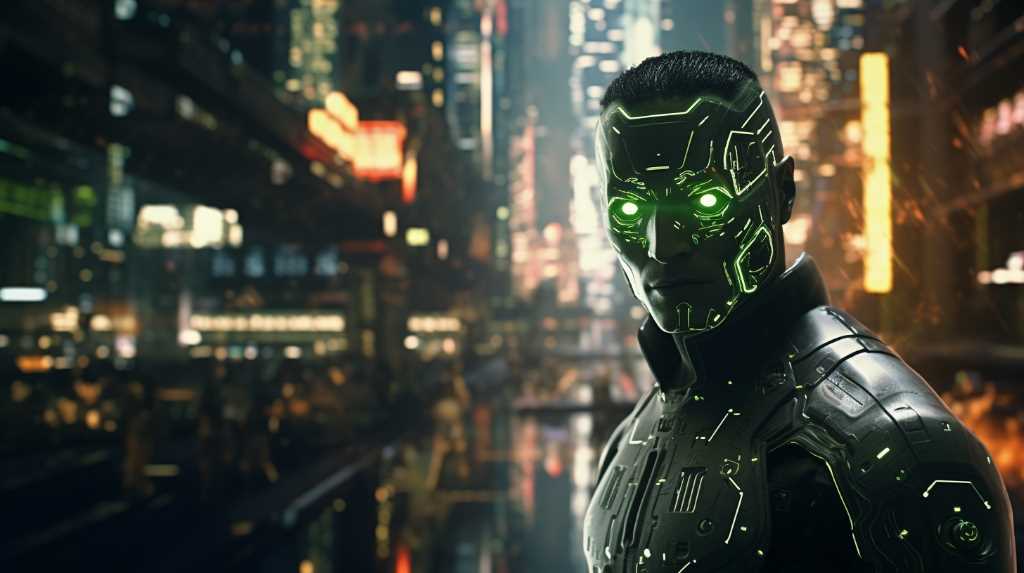We have made significant progress since the days of manually editing film reels and laboriously creating visual effects.
With AI’s emergence in the world of film and TV production, we’ve witnessed a revolution that has forever changed the way content is made.
From automating pre-production processes to enhancing CGI, streamlining post-production workflows to improving audience targeting, AI has become an indispensable tool in the creative process.
In this article, we’ll explore the game-changing impact of AI on the world of entertainment.

Key Takeaways
- AI automation improves efficiency in production processes, from pre-production to post-production, reducing costs and saving time.
- AI enhances visual effects and CGI, allowing for the creation of realistic and immersive worlds and pushing the boundaries of visual storytelling.
- AI enables personalized audience targeting and engagement through content recommendations and improved marketing strategies.
- AI revolutionizes scriptwriting and storytelling by analyzing data, generating ideas, and enhancing creative collaboration between AI and human creators.
Automating Pre-Production Processes
In our industry, we rely on AI to automate pre-production processes, streamlining our workflow and improving efficiency. One of the ways AI has revolutionized our field is through the development of AI-generated scripts. By training AI models on vast amounts of existing scripts, it can generate new scripts that align with specific genres or styles. This not only saves time but also offers a fresh perspective and creativity to the storytelling process.
Another aspect where AI has made a significant impact is virtual location scouting. Traditionally, location scouting involved physically visiting potential sites, which could be time-consuming and costly. With AI, we can now utilize virtual simulations and 3D renderings to explore different locations without leaving the studio. This not only expands our possibilities but also allows us to create visually stunning and immersive worlds.
By automating these pre-production processes, AI has paved the way for enhancing visual effects and CGI. With AI’s ability to process and analyze large volumes of data, it can assist in creating realistic and breathtaking visual effects, pushing the boundaries of what’s possible on screen.
As we delve into the next section, we’ll explore how AI has transformed the world of visual effects in film and TV production.

Enhancing Visual Effects and CGI
Additionally, through the automation of pre-production processes, AI hasn’t only streamlined our workflow and improved efficiency but has also significantly enhanced visual effects and CGI in film and TV production.
AI has revolutionized real-time rendering, allowing for more realistic and immersive visual effects. By harnessing the power of machine learning algorithms, AI can generate high-quality graphics in a fraction of the time it would take for human artists to create them manually.
Moreover, AI has also made advancements in virtual set design, enabling filmmakers to create stunning and intricate virtual environments that were once only possible through expensive physical sets. With AI, filmmakers have the freedom to explore limitless possibilities, unleashing their creativity and pushing the boundaries of visual storytelling.
As we delve into the next section about streamlining post-production workflows, we’ll see how AI continues to transform the film and TV industry.

Streamlining Post-Production Workflows
Moving forward, we’ll explore how AI continues to revolutionize the film and TV industry by streamlining post-production workflows.
AI has significantly impacted post-production by increasing efficiency and reducing costs. With the help of AI-powered tools, tasks that used to take hours or even days can now be completed in a fraction of the time.
For example, AI algorithms can automatically analyze and tag footage, making it easier for editors to locate specific shots. AI can also automate the process of color grading, saving hours of manual work.
Additionally, AI-powered software can intelligently suggest the best takes or edits based on predefined criteria, further streamlining the editing process.

Improving Audience Targeting and Engagement
To further enhance the impact of AI on film and TV production, we continue by exploring how it improves audience targeting and engagement through its innovative capabilities.
AI has revolutionized the way content is recommended to viewers, allowing for personalized recommendations that cater to individual preferences. By analyzing vast amounts of data, AI algorithms can determine what content a viewer is likely to enjoy and suggest relevant options. This not only enhances the viewing experience but also increases the likelihood of audience engagement and satisfaction.
Additionally, AI has proven to be instrumental in improving marketing strategies by providing insights into consumer behavior and preferences. With AI-powered analytics, filmmakers and producers can better understand their target audience and tailor their marketing campaigns accordingly, ensuring maximum reach and impact.
Revolutionizing Content Creation and Storytelling
Building on the advancements in audience targeting and engagement, AI has revolutionized content creation and storytelling in the film and TV industry by introducing groundbreaking capabilities. This has led to a significant storytelling evolution, where AI algorithms analyze vast amounts of data to identify patterns and predict audience preferences, allowing creators to tailor their content to specific demographics.

The creative collaboration between AI and human creators has also been enhanced, with AI algorithms assisting in generating story ideas, suggesting plot twists, and even developing characters. This collaboration hasn’t only streamlined the content creation process but also sparked new levels of creativity and innovation.
Frequently Asked Questions
How Does AI Automate Pre-Production Processes in Film and TV Production?
AI automates pre-production processes in film and TV production by streamlining tasks such as script analysis, casting, and location scouting. This revolutionizes the industry, increasing efficiency and reducing costs, allowing for more creative freedom in the storytelling process.
What Are Some Examples of How AI Enhances Visual Effects and CGI in the Industry?
AI has revolutionized visual effects and CGI in film and TV production. It has allowed for breathtakingly realistic scenes, seamless integration of virtual elements, and efficient post-production processes. The future of this technology is limitless.
How Does AI Streamline Post-Production Workflows in Film and TV Production?
AI streamlines post-production workflows in film and TV production by automating tasks such as video editing, sound mixing, and color grading. It revolutionizes the industry, making the process faster, more efficient, and allowing for greater creative freedom.

Can You ExplAIn How AI Improves Audience Targeting and Engagement in the EntertAInment Industry?
AI revolutionizes audience targeting and engagement in the entertainment industry. By analyzing real-time audience analytics, AI provides valuable insights for personalized content recommendations. This game-changing revolution empowers us to create and connect with our audience like never before.
In What Ways Does AI Revolutionize Content Creation and Storytelling in Film and TV Production?
Incorporating AI into content creation and storytelling in film and TV production is a game-changing revolution. AI’s role in scriptwriting and character development, as well as its influence on narrative structure and plot evolution, is truly transformative.
Conclusion
In conclusion, the impact of AI on film and TV production is nothing short of a game-changing revolution.
By automating pre-production processes, enhancing visual effects, streamlining post-production workflows, and improving audience targeting, AI has revolutionized content creation and storytelling.

It has brought forth a new era of innovation and creativity, transforming the way we experience films and TV shows.
The juxtaposition of technology and human artistry evokes a sense of awe and excitement, leaving us eagerly anticipating what the future holds for the entertainment industry.











